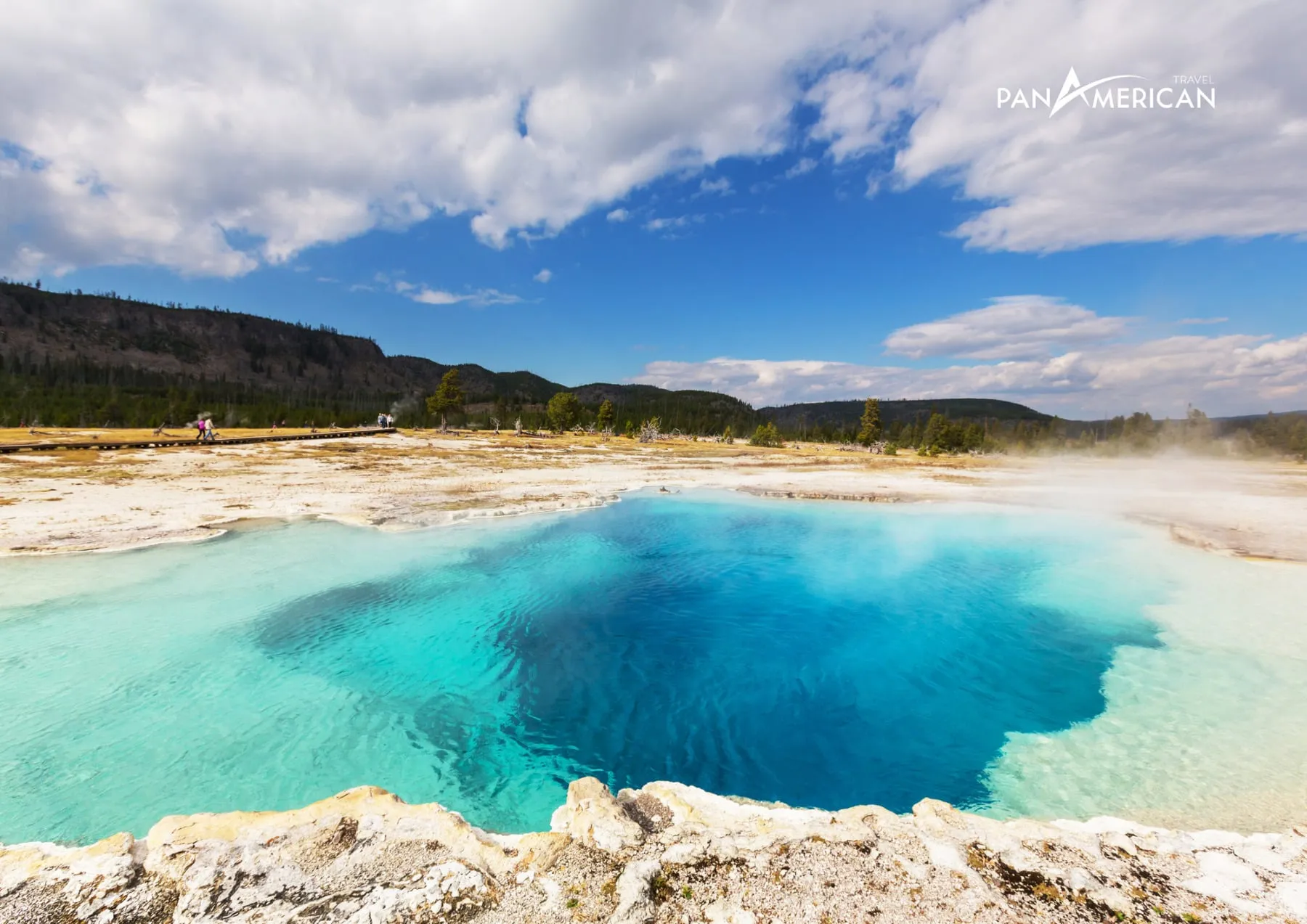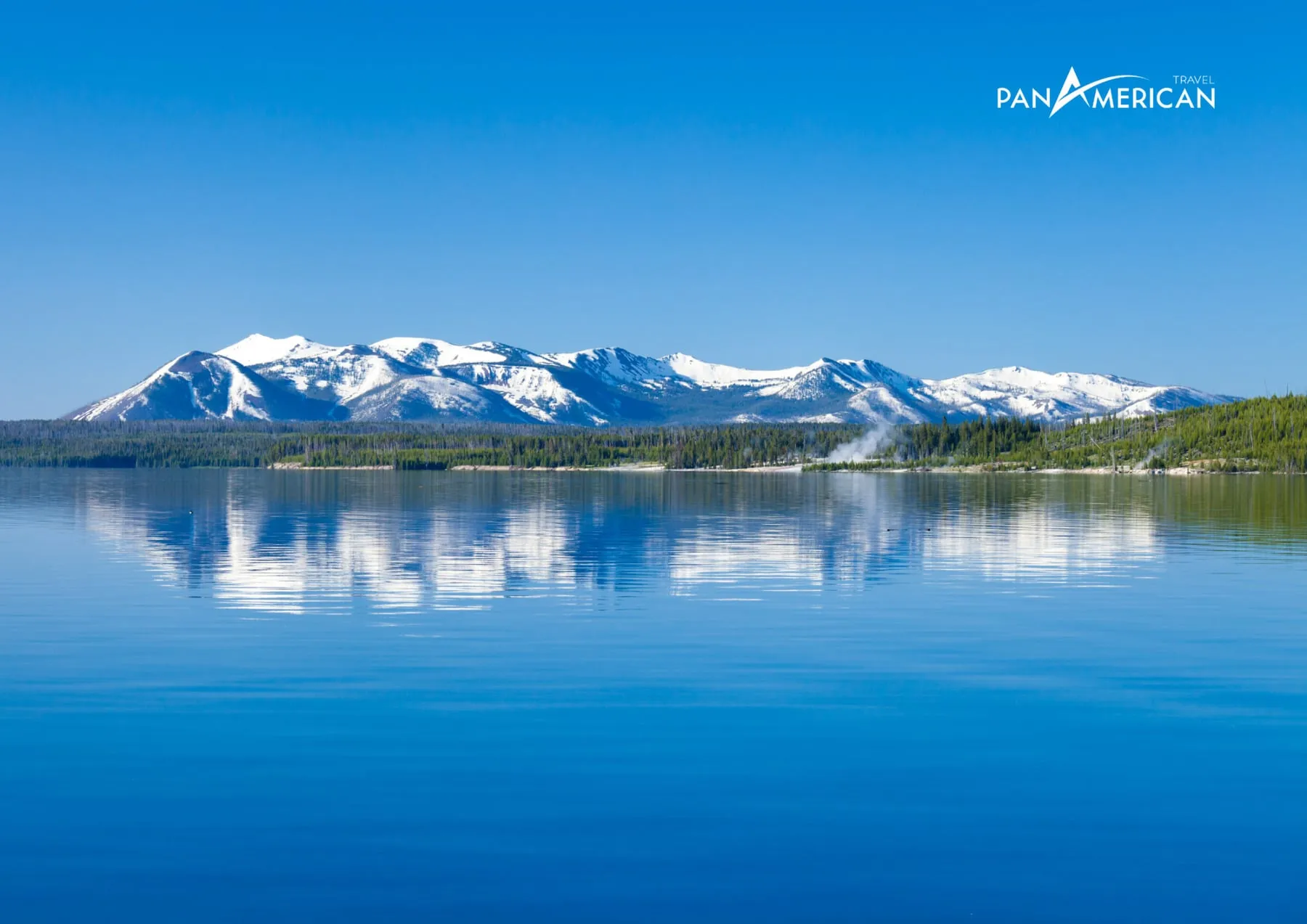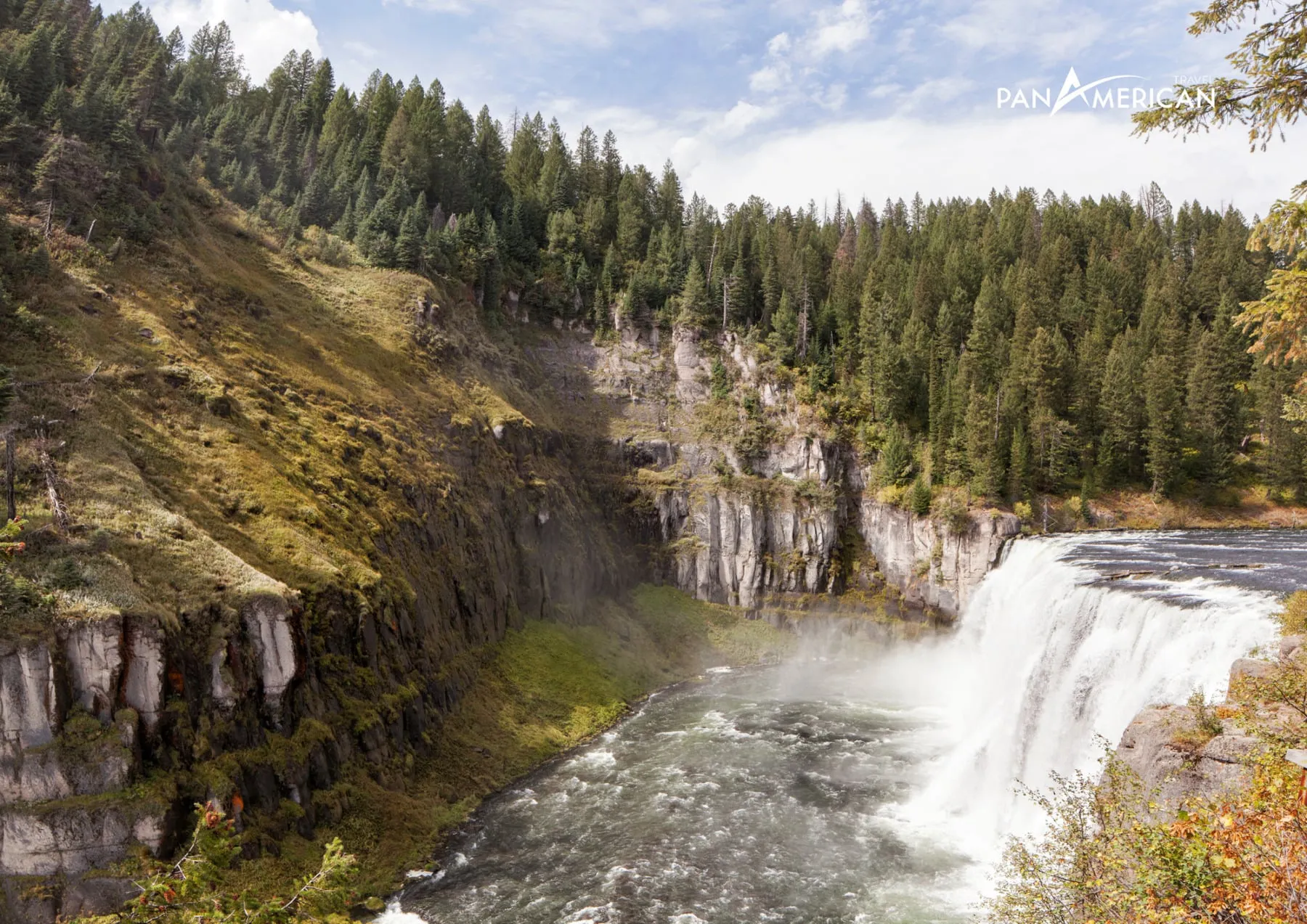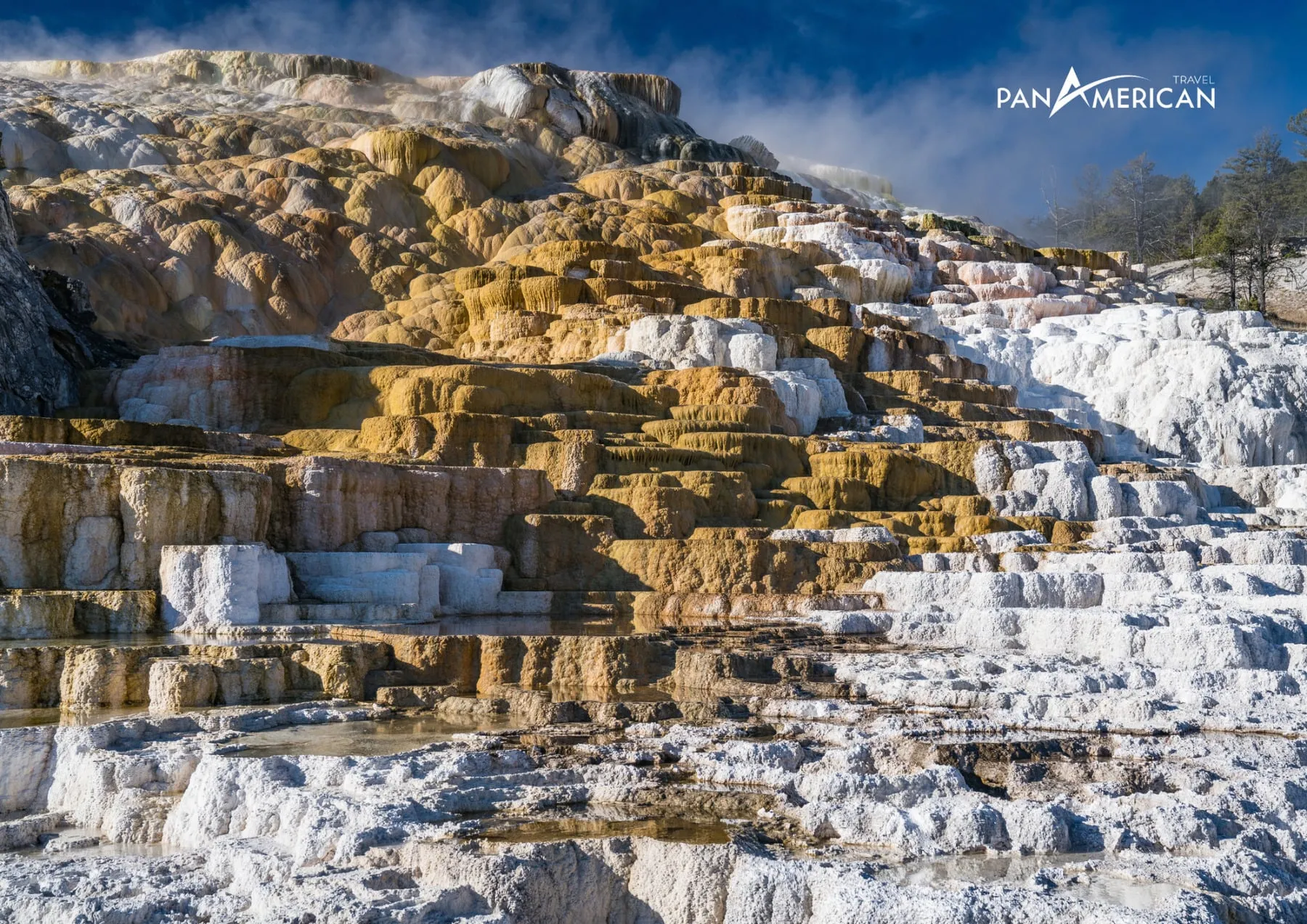Wyoming, a mountainous state in the Western United States, is not only famous for its pristine natural beauty but also a geological paradise, home to unique wonders shaped by time and incredible natural processes. For geology enthusiasts, Wyoming is like a giant textbook opening up countless fascinating things to explore. Let’s explore with “Du lịch khắp thế gian” (Travel Around the World) the must-visit destinations in Wyoming, where geology becomes an inseparable part of the travel experience.
Yellowstone National Park – A Living Geology Museum
Speaking of Wyoming, one cannot miss Yellowstone National Park, a gem not only of the United States but of the world. Yellowstone is located at the intersection of three states—Wyoming, Montana, and Idaho—but most of its area belongs to Wyoming. It is known as one of the most geothermally active areas on the planet, with over 10,000 hot springs, mud pots, and geysers, the most famous of which is Old Faithful.
Yellowstone National Park is not just an ordinary national park; it is a living geology museum where visitors can witness geological processes happening daily. The Yellowstone Caldera, a supervolcano hidden beneath the park, is one of the largest supervolcanoes in the world. The activity of this volcano has created Yellowstone’s unique and diverse landscape, from the steaming vents of geysers to the vibrant colors of hot springs.
Old Faithful Geyser – A Symbol of Natural Grandeur
Old Faithful is one of the most famous geysers in the world and a symbol of Yellowstone National Park. This geyser erupts approximately every 90 minutes, with a hot water column averaging 40 meters high, sometimes reaching up to 55 meters. The punctuality and towering water column of Old Faithful always leave visitors in awe.
The eruption phenomenon of Old Faithful is the result of the interaction between groundwater and heat from the earth’s interior. Groundwater seeps through porous rock layers, comes into contact with hot rock created by volcanic activity, and is heated to boiling point. The pressure of steam increases to a certain level, overcoming the resistance of the water column above, creating a spectacular eruption. This process repeats regularly, creating the wonder of Old Faithful.

Grand Prismatic Spring – Nature’s Vibrant Palette
Grand Prismatic Spring, the third-largest hot spring in the world, is another geological marvel of Yellowstone. What makes Grand Prismatic Spring special is the vibrant rainbow colors surrounding the spring’s center. These colors are created by thermophiles (heat-loving bacteria) living in the high-temperature conditions of the hot spring.
The water temperature at the center of the spring can reach 85°C, creating conditions for different bacteria to thrive in different temperature zones, thus creating rings of color from blue in the center (hottest), to green, yellow, orange, and red at the edges of the spring (where the temperature gradually decreases). Grand Prismatic Spring is not just a hot spring; it is a unique natural artwork, showcasing the diversity and richness of the microbial world in a harsh environment.
Yellowstone Lake – Testimony to a Supervolcano
Yellowstone Lake, the largest freshwater lake in North America above 2,000 meters above sea level, is located entirely within the Yellowstone Caldera. This vast lake not only possesses poetic beauty but is also a powerful testament to the area’s turbulent geological history.
The formation of Yellowstone Lake is linked to supervolcano eruptions in the past. About 640,000 years ago, a massive supervolcano eruption created the Yellowstone Caldera, a vast basin. Over time, this basin gradually accumulated rainwater and meltwater from snow and ice, forming Yellowstone Lake as it is today. Yellowstone Lake is not just a beautiful lake; it is also a “window” into the heart of the Yellowstone supervolcano, which still harbors immense geological power.

Grand Canyon of the Yellowstone – A Deep Cut into the Earth
The Grand Canyon of the Yellowstone is another geological masterpiece of Yellowstone, likened to the “second Grand Canyon” of the United States. This deep canyon was created by the Yellowstone River over thousands of years of erosion and abrasion of the volcanic rock layers.
A special feature of the Grand Canyon of the Yellowstone is the bright yellow color of the cliffs, a color resulting from the chemical alteration of volcanic rock under the influence of hot water and steam from hot springs in the area. The two majestic waterfalls, Upper Falls and Lower Falls, cascading into the canyon further enhance the spectacular beauty and natural power of this place. The Grand Canyon of the Yellowstone is not just a beautiful landscape; it is also a testament to the erosive power of water and the geological transformation process spanning millions of years.

Mammoth Hot Springs – Terraced White Travertine
Mammoth Hot Springs is another unique hot spring area in Yellowstone, famous for its white travertine terraces resembling giant rice terraces. Hot water from the earth’s interior flows through limestone layers, dissolving calcium carbonate and then depositing it on the surface, creating unique travertine structures.
The colors of Mammoth Hot Springs change over time and according to the activity of the hot springs. When hot springs are highly active, travertine is bright white. When the flow decreases or stops, algae and bacteria can grow on the travertine surface, creating patches of yellow, orange, or brown. Mammoth Hot Springs is a testament to the complex chemical and biological processes taking place in the hot spring system, creating fascinating geological landscapes.

Beyond Yellowstone – Wyoming’s Other Surprises
Wyoming is not just Yellowstone; this state also boasts many other interesting geological destinations, catering to all exploration preferences of geology enthusiasts. From Grand Teton National Park with its majestic granite mountains, Devils Tower National Monument with its mysterious basalt column, to Bighorn Canyon with its colorful sandstone canyons, Wyoming is always ready to welcome geology lovers to explore and experience.
Conclusion
Wyoming, with Yellowstone National Park as its centerpiece, is truly an ideal destination for those passionate about geology. This place not only has stunning natural landscapes but also hides fascinating geological stories, from the formation of volcanoes, hot springs, canyons to the diversity of rocks and minerals. Come to Wyoming to discover unique geological wonders, to learn more about the power and wonder of nature, and to have unforgettable travel experiences.